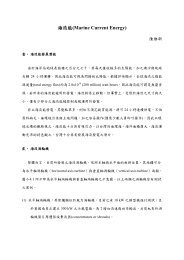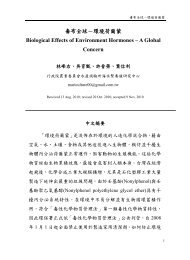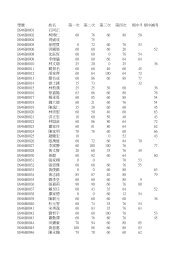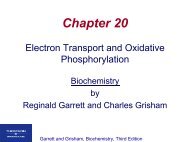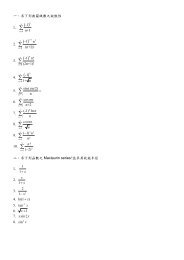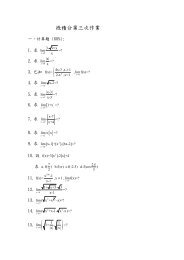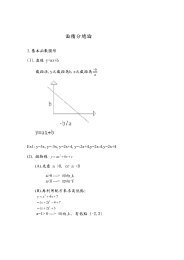PDF(336K) - 國立臺灣海洋大學
PDF(336K) - 國立臺灣海洋大學
PDF(336K) - 國立臺灣海洋大學
You also want an ePaper? Increase the reach of your titles
YUMPU automatically turns print PDFs into web optimized ePapers that Google loves.
海 大 漁 推 41<br />
得 膠 原 蛋 白 之 特 性 與 其 水 解 物 機 能 性 之 應 用 。<br />
ABSTRACT<br />
Collagen is the most abundant protein in vertebrates and<br />
constitutes about 30% of total proteins. It provides the major<br />
structural and mechanical support to tissues. There are at 28 different<br />
types of collagen, named from type I to type XXVIII, which varies<br />
considerably in their complexity and diversity of their structure.<br />
Collagen has been widely used in fields including foods, medicines,<br />
cosmetics and tissue engineering due to its excellent biocompatibility<br />
or biodegradability. Generally, the main sources of type I collagen are<br />
limited to those of bovine or porcine dermis. However, bovine<br />
spongiform encephalopathy (BSE), transmissible spongiform<br />
encephalopathy (TSE) and foot and mouth disease (FMD) are threat<br />
to collagen products based on these materials. As a consequence, the<br />
alternative sources of collagen, especially from aquatic animals<br />
including freshwater and marine fish and mollusks have received<br />
increasing attention. Biochemical properties of collagen, such as<br />
thermal stability, might be different between the different sources. On<br />
the other hand, enzyme-hydrolyzed collagen plays an increasingly<br />
important role in various products and applications. Its different<br />
properties and functionalities benefit the end consumer now in ways<br />
which were not present ten years ago. Over the past decade, a large<br />
18





